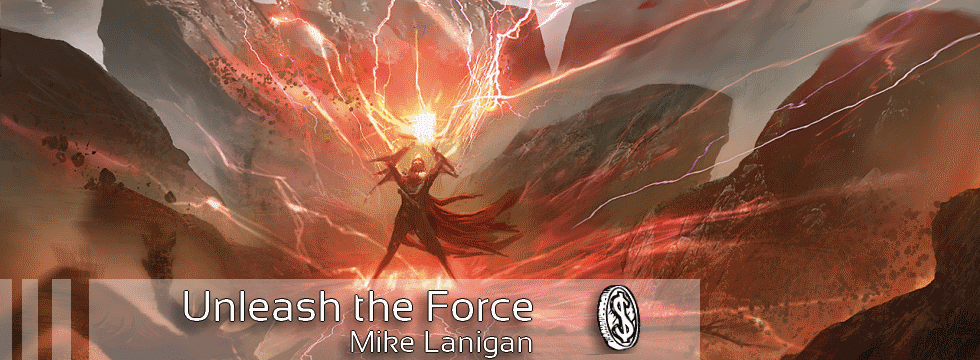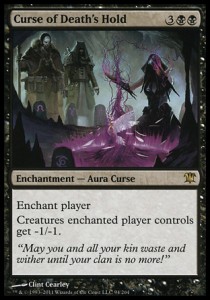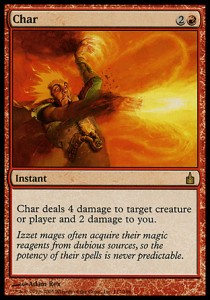Are you a Quiet Speculation member?
If not, now is a perfect time to join up! Our powerful tools, breaking-news analysis, and exclusive Discord channel will make sure you stay up to date and ahead of the curve.
When is it right to build your own deck and go against what the masses believe is best? If your goal is to have fun, the right answer may well be always. However, if succeeding in competitive play is your goal, you will need to follow certain guidelines when going rogue.
I’ve played many rogue decks over the years, but this past year I’ve begun to see their true strategic value. It all comes down to information.
Think about [card Delver of Secrets]Delver[/card] for a minute. Everyone knows this deck and can probably recognize it without too much difficulty. Once a player has identified the deck, they can easily guess which cards are likely to appear in the list, and play accordingly.
Now imagine that I play a tapped Rootbound Crag on turn one, and follow it up with Plains into Thalia, Guardian of Thraben. My opponent will not have any idea what else to expect from me. I can leverage this lack of information to my advantage.
Taking the Road Less Travelled
There is merit to going rogue, but you need to know when it is appropriate. Here are the steps I try to follow when brewing a new deck.
Step One: Analyze Recent Data
Your first task is to analyze data from recent events to get a general picture of the metagame.
Players usually look at the last few big events to determine what deck to play in the next one. Often, the decks that preformed well draw in more players and end up heavily represented.
If you are not up to date on what people are playing, your trip can be ruined before you even leave.
Make sure you know what you are getting yourself into. What decks did well? What decks are good against those decks? How will you sideboard against your expected metagame? These are the types of questions you need to ask yourself while looking over the coverage from the events.
Step Two: Examine Established Archtypes
After you have some idea about the expected field, your next task is to examine the various tier-two archetypes to see if one may be well-positioned in the new metagame.
Sometimes going rogue just means playing a deck that others had underestimated.
Team Channel Fireball is particularly good at recognizing when a given archetype is ready for a ressurgence, a skill that no doubt contributes to their continued tournament dominance.
Recently at Grand Prix Baltimore, most of the team played Blue-Black Control. Up until then, the deck enjoyed a small and dedicated following but had yet to put up any significant results. The Channel Fireball crew ascertained correctly that the metagame had shifted to favor Blue-Black.
In this case, the strength of the deck lay in [card Curse of Deaths Hold]Curse of Death’s Hold[/card], which basically wins you the game against any aggressive opponents. The key to that tournament was recognizing the increased value of this card and its accompanying strategy.
Step Three: Identify Unexplored Space
Finally, you want to look at the strategies that have been unexplored or dismissed by the community at large, and identify those with competitive potential. This is the step most people think of when they hear “rogue deck.”
Take a look at Black White Tokens. When Sorin, Lord of Innistrad was first spoiled, everyone, including myself, thought the format would be dominated by the new tokens deck. Things didn’t really work out the way we expected.
Why didn’t that happen? To begin with, a lot of [card Ratchet Bomb]Ratchet Bombs[/card] helped keep it down. Players were afraid enough of the hate to leave their token makers at home.
Now, however, the deck is starting to see some play and put up pretty good results. The deck hasn’t really changed, but the metagame has shifted away from token hate.
Another example is the Naya Pod Aggro deck I talked about a while ago. Around the time of my article, no one had really put those cards together in the same deck before. Along came the Pro Tour and one team put someone in the top 8 with a similar list.
This previously fringe strategy paid off in this tournament because the metagame had shifted. The additions of Strangleroot Geist and Huntmaster of the Fells certainly helped the deck out, but part of its success was due to the changed value of its other pieces.
Tying it All Together
The key to this approach to deck building is recognizing when the value of particular cards or strategies has changed.
If you notice a particular card or deck that is powerful in the abstract but isn’t seeing any play, ask yourself why. What is holding this strategy back? Has something recently changed to make the underplayed strategy better than it was?
If you can find an idea that seems to have become better positioned in this way, write some deck lists down and see how they look. Then sleeve or proxy them up and give them a try. They won’t always work, but you will learn a lot in the process.
When they do work though, you may find yourself doing much better at events.
Developing Standard
This weekend I am taking a break from Standard to attend the limited Grand Prix in Nashville. (If you’re in Nashville, feel free to stop over and say hello.) In the mean time however, other events will be happening to influence Standard.
I have been thinking a lot about how the metagame is going to evolve in the coming weeks. Most of my thoughts have centered on Zombies.
People have started playing a lot more [card Curse of Deaths Hold]Curse of Death’s Hold[/card], which presents a problem for Zombies. [card Curse of Deaths Hold]Curse[/card] is one of the few cards I am actually afraid of when playing Zombies. It just shuts down everything you want to do. You may manage to get your opponent down to a low life total before they land it, but then have a hard time finishing them off.
How can we fix this? Perhaps a dash of red will do the trick.
Remember when Char was first printed, how completely bonkers it was? Well Brimstone Volley is even better. If you have a way to reliably sacrifice creatures, it becomes three mana for five damage!
Another excellent red card is Galvanic Blast. Because morbid is so easy to attain in Zombies, the typical wisdom says to play Tragic Slip. With morbid active, Tragic Slip is one mana to remove any non-hexproof creature in Standard. That is definitely good, however Galvanic Blast is capable of functioning almost as well in this role while also providing the reach you need.
Take a look:
Untitled Deck
The main reason to play blue in Zombies is Phantasmal Image, which we’ve replaced with Phyrexian Metamorph. It costs a little more mana, but I did include a few [card Drowned Catacomb]Drowned Catacombs[/card] to help out with the blue mana occasionally. Without blue we also lose access to Diregraf Captain, but I think he was one of the weakest cards in the deck. He may seem good, but in my testing he just didn’t have a large impact on the outcome of games.
In the blue-black version, you have to rely on the additional power bonus of the captain to end the game. With red, you just deal that damage to them directly. It shouldn’t be hard to get four damage out of a Galvanic Blast either. Between Mortarpod, Porcelain Legionnaire, and Phyrexian Metamorph, metalcraft should be fairly easy to attain.
This is just one example of how to brew for a new metagame. By adding a new dimension to an established deck, we benefit from that deck’s strengths and put our opponents in uncomfortable territory. While they may not be overly surprised at something like a red splash in Zombies, it is unlikely they have any experience playing against it. This works to the rogue deckbuilder’s benefit.
So, remember to look for weaknesses in the metagame that can be exploited. Whether that means changing a few cards in an already known deck or developing your own from scratch, sometimes going rogue can give you the edge you need to win the event.
Until next time,
Unleash your rogue force!
Mike Lanigan
MtgJedi on Twitter
Jedicouncilman23@gmail.com







